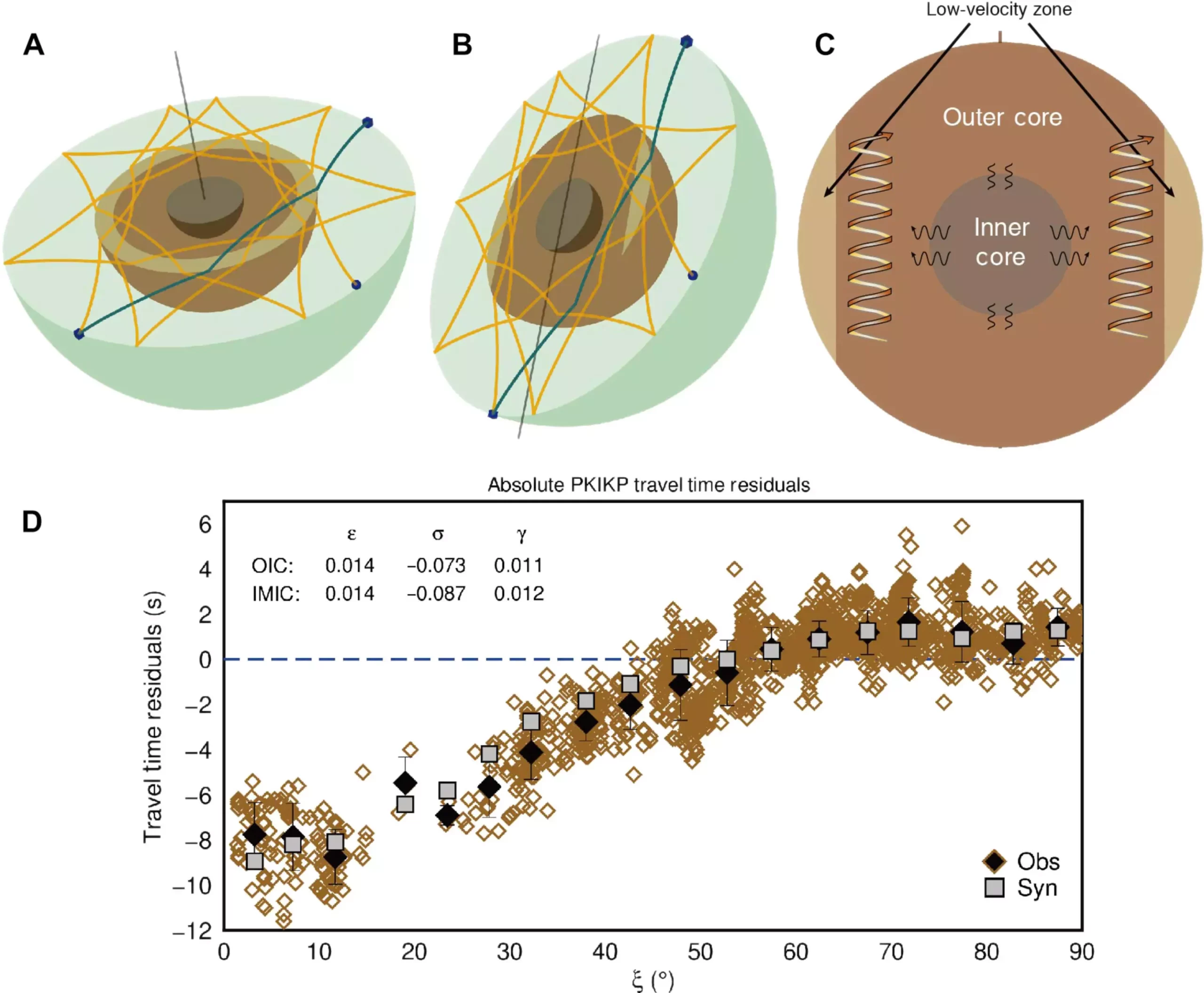A recent discovery made by scientists from The Australian National University (ANU) has unveiled a doughnut-shaped region thousands of kilometers beneath Earth’s surface within the liquid core. This newfound structure, located at low latitudes and parallel to the equator, has remained undetected until now. The significance of this discovery lies in its potential to provide new insights into the dynamics of Earth’s magnetic field.
Earth’s core consists of two layers: the solid inner core and the liquid outer core, with the outer core meeting the mantle. The doughnut-shaped region was discovered at the top of Earth’s outer core. ANU seismologists, led by Professor Hrvoje Tkalčič, found that seismic waves in this region travel slower compared to the rest of the liquid outer core. The exact thickness of the doughnut-shaped region is yet to be determined, but it is believed to extend several hundred kilometers beneath the core-mantle boundary.
Unlike traditional seismic wave observation techniques that focus on signals generated immediately after earthquakes, the ANU scientists analyzed waveforms several hours post-earthquake origin times. This unconventional approach allowed them to detect the unique doughnut-shaped structure within Earth’s liquid core. By studying the paths and travel times of the waves through the outer core, the researchers confirmed the region’s low seismic speeds. This discovery challenges previous studies that had limited volumetric coverage of the outer core due to observing waves confined within one hour after earthquake origin times.
Dr. Xiaolong Ma, a co-author of the study, emphasized that the discovery of the doughnut-shaped region sheds light on the mysteries surrounding Earth’s outer core dynamics. The outer core, primarily composed of liquid iron and nickel, plays a crucial role in generating Earth’s magnetic field. Understanding the composition of the outer core, including the presence of light chemical elements, is essential for predicting changes in the magnetic field that could impact life on Earth. The high concentration of light elements in the newly discovered region affects the speed of seismic waves and contributes to the stirring of liquid in the outer core.
The revelation of a doughnut-shaped region within Earth’s liquid core represents a significant advancement in our understanding of the planet’s magnetic field dynamics. This discovery opens up new avenues for interdisciplinary research in seismology, mineral physics, geomagnetism, and geodynamics to unravel the mysteries of the Earth’s core. The implications of this finding extend beyond scientific curiosity, highlighting the importance of Earth’s magnetic field in sustaining life on our planet.


Leave a Reply